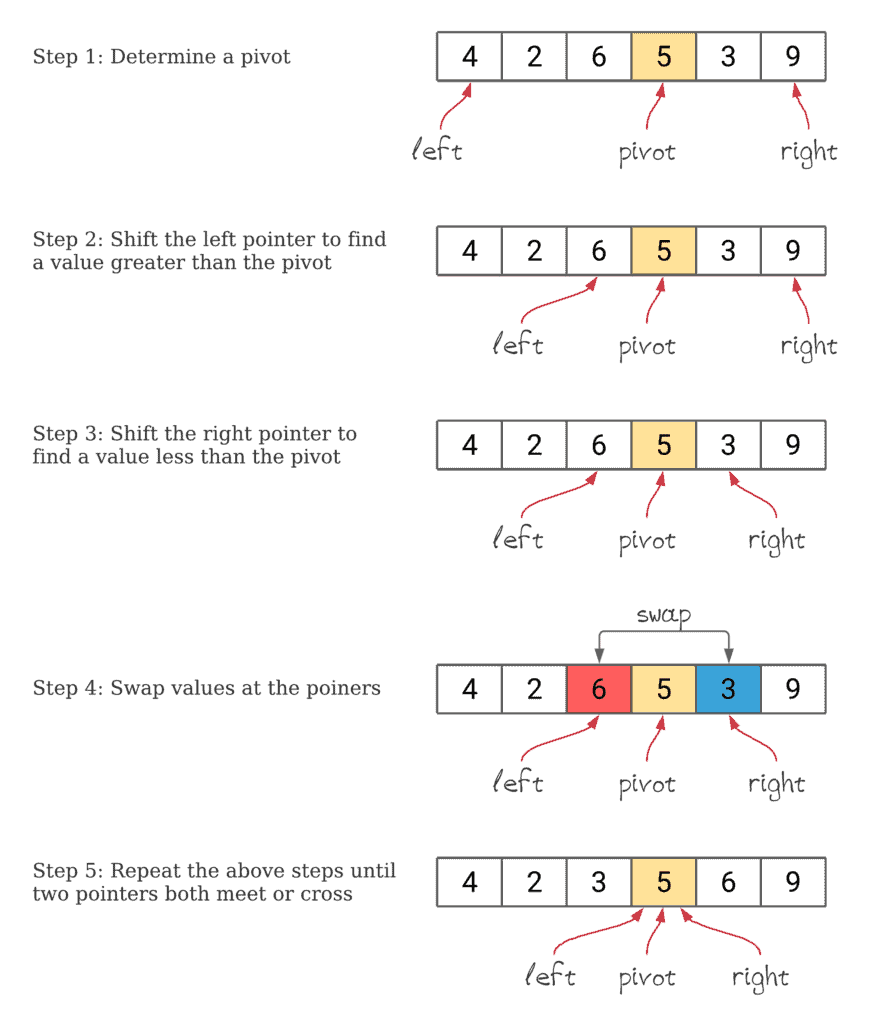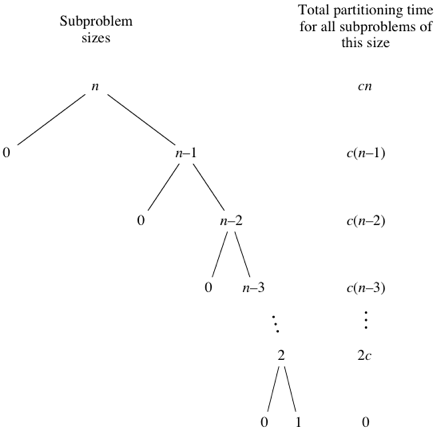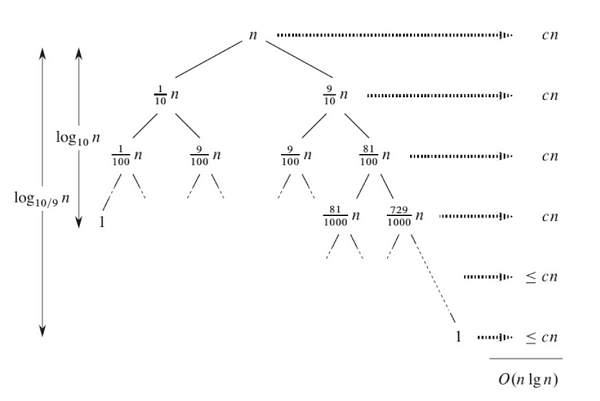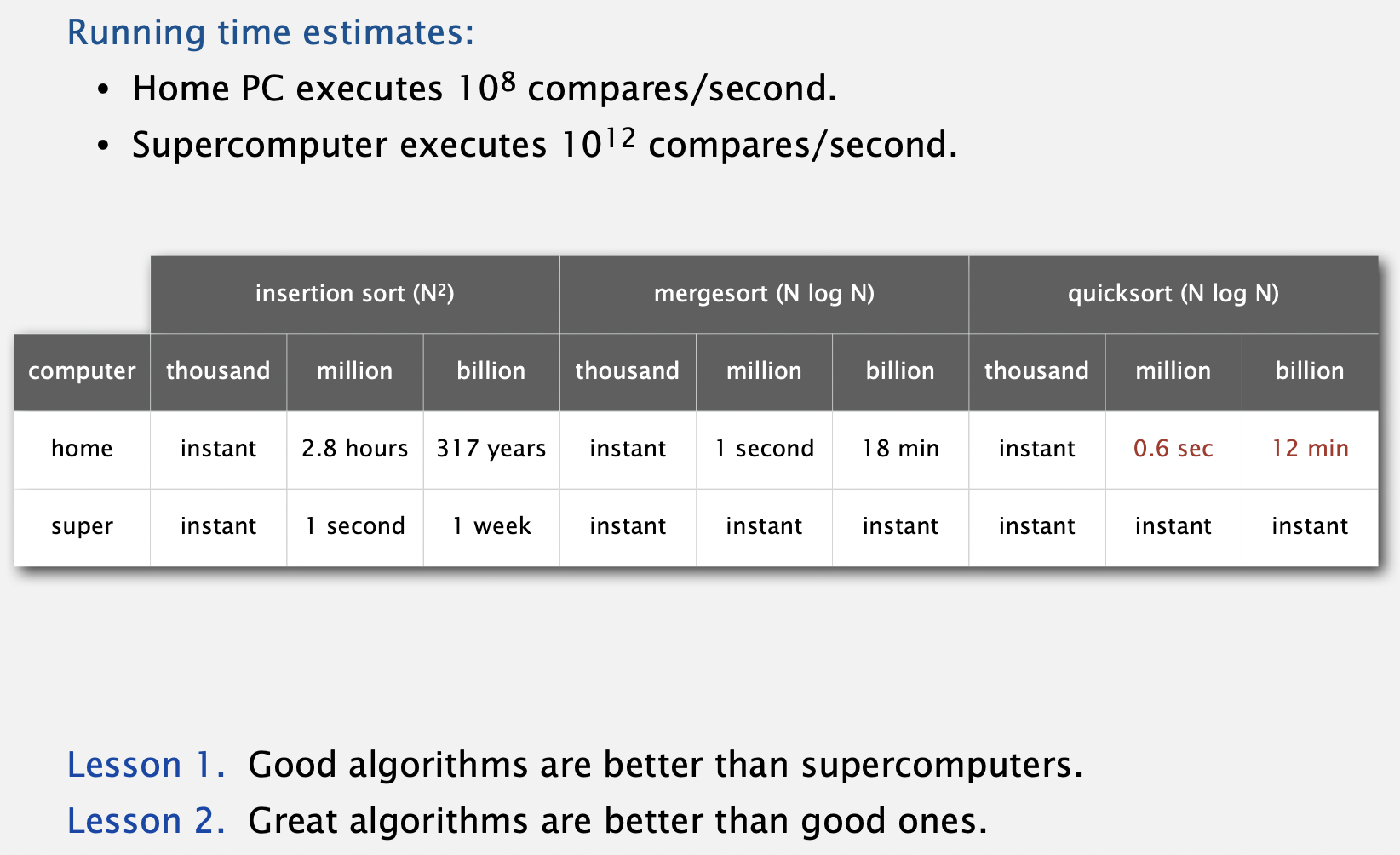Quicksort#

Quick Sort#
Divide the array into two partitions (subarrays)
need to pick a pivot and rearrange the elements into two partitions
Conquer Recursively each half
call Quick Sort on each partition (i.e. solve 2 smaller problems)
Combine Solutions
there is no need to combine the solutions
Partition#
Implementation#
1void quicksort(int *A, int n, int m)
2{
3 // shuffle the array
4 std::random_shuffle(A, A + n);
5
6 // call recursive quicksort
7 r_quicksort(A, 0, n - 1);
8}
1void r_quicksort(int *A,int lo, int hi)
2{
3 if (hi <= lo) return;
4
5 int p = partition(A, lo, hi);
6
7 r_quicksort(A, lo, p - 1);
8
9 r_quicksort(A, p + 1, hi);
10}
1int partition (int *A, int lo, int hi)
2{
3 int i = lo;
4 int j = hi + 1;
5 while (1) {
6
7 // while A[i] < pivot, increase i
8 while (A[++i] < A[lo])
9 if (i == hi) break;
10
11 // while A[i] > pivot, decrease j
12 while (A[lo] < A[--j])
13
14 if (j == lo) break;
15
16 // if i and j cross exit theloop
17 if(i >= j) break;
18
19 // swap A[i] and A[j]
20 std::swap(A[i], A[j]);
21 }
22 // swap the pivot with A[j]
23 std::swap(A[lo], A[j]);
24
25 //return pivot's position
26 return j;
27}
Visualize
Analysis of Quick Sort#
input sorted, reverse order, equal elements
can shuffle or randomize the array (to avoid the worst-case)
pivot partitions array evenly (almost never happens)
analysis is more complex
Consider a 9-to-1 proportional split
Even a 99-to-1 split yields same running time
Faster than merge sort in practice (less data movement)
Add all \(cn\) from side of tree with greatest depth (right subtree):
Sorting Algorithms#
Best-Case |
Average-Case |
Worst-Case |
Stable |
In-place |
|
|---|---|---|---|---|---|
Selection Sort |
|||||
Insertion Sort |
|||||
Merge Sort |
|||||
Quick Sort |
Best-Case |
Average-Case |
Worst-Case |
Stable |
In-place |
|
|---|---|---|---|---|---|
Selection Sort |
\(n^2\) |
\(n^2\) |
\(n^2\) |
No |
Yes |
Insertion Sort |
\(n\) |
\(n^2\) |
\(n^2\) |
Yes |
Yes |
Merge Sort |
\(n\ log\ n\) |
\(n\ log\ n\) |
\(n\ log\ n\) |
Yes |
No |
Quick Sort |
\(n\ log\ n\) |
\(n\ log\ n\) |
\(n^2\) |
No |
Yes |







Comments on Quick Sort#
it is in-place but not stable
benefits substantially from code tuning
use insertion sort for small arrays
avoid overhead on small instances (~10 elements) median of 3 elements
estimate true median by inspecting 3 random elements three-way partitioning
create three partitions \( \le pivot\), \(== pivot\), \( \ge pivot\)